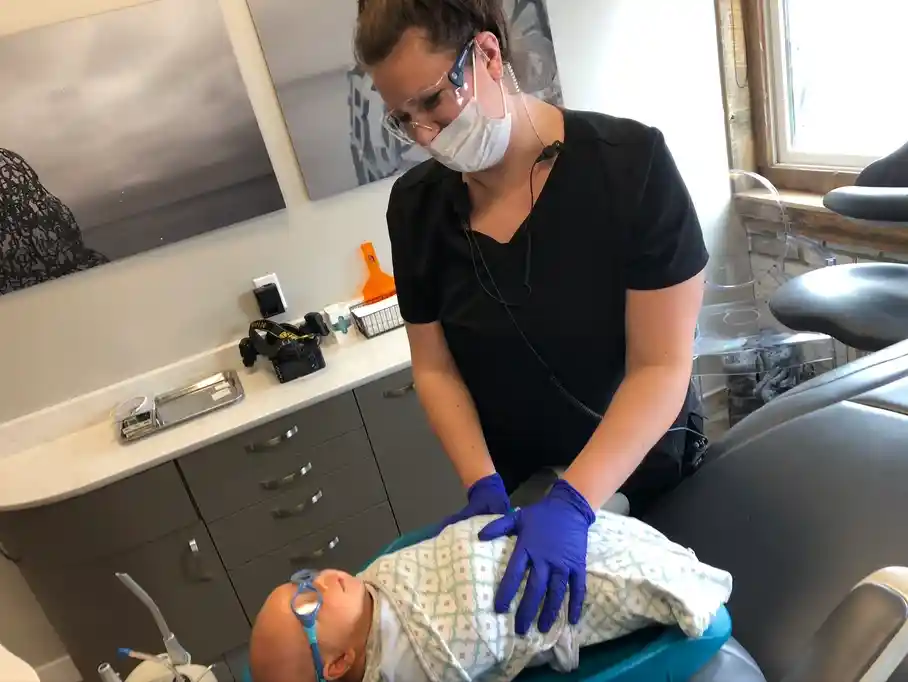Have you ever wondered what the airway is and how it works? The airway anatomy is a complex system that performs essential functions in our body. Understanding the anatomy of the airway can help you recognize when something is not right and seek professional help. In this blog post, we will discuss the airway’s anatomy, its functions, common issues, and how to keep it healthy. Let’s dive right in!
What Is The Airway?
The airway is a complex passage for air to travel through and into the lungs. It is composed of a number of different parts, including the nose, mouth, throat, trachea, bronchi, bronchioles, and alveoli. These components work together to provide oxygen to the body, and to expel carbon dioxide. The airway is essential for the maintenance of life and is a highly specialized structure that is divided into two parts: the upper and the lower airway.
Main Airway Functions
The main functions of the airway are to provide a path for air to enter and exit the lungs and to filter and warm the incoming air. This is crucial for providing oxygen to the body, and for expelling carbon dioxide. The airway also helps to protect our lungs from potential dangers in the environment, such as dust and other particles. Additionally, it plays a vital role in speech, allowing us to communicate with others effectively.
Airway Development (Embryology)
The airway’s embryology begins in the fourth week of gestation, and it continues to develop until the fifth year of life. During this process, the respiratory system undergoes several changes and develops into a complex network of tubes, cartilage, and muscles.
During the development of the human embryo, the first parts of the airway to form are the nasal cavity and the trachea. The nasal cavity separates the airway from the digestive system and is formed by the fusion of two nasal folds. The trachea is made up of cartilage rings and forms the main tube of the airway. As the embryo grows, the tongue, larynx, and bronchi develop to form the upper and lower parts of the airway.
Upper Airway Anatomy
The upper airway consists of the nose, mouth, and throat. Its primary function is to warm, humidify, and filter the inhaled air before it reaches the lungs. The upper airway is also contributes to the sense of smell and taste. The muscles of the upper airway include the nasopharyngeal muscles, oropharyngeal muscles, and laryngeal muscles.
- Nose: Is the first structure of the upper airway that the air passes through. It is composed of bone and cartilage and has two nostrils that lead to the nasal cavity. The nasal cavity is lined with cilia and mucus-secreting cells that help filter and humidify the inhaled air.
- Mouth: Is the secondary structure of the upper airway, and it plays a significant role in respiration during exercise and when the nose is blocked. However, breathing through the mouth can lead to drying of the airways and infections.
- Throat: Also known as the pharynx, is a muscular tube that connects the nose and mouth to the esophagus and larynx. It is divided into three parts: the nasopharynx, oropharynx, and laryngopharynx. The throat’s muscles help with swallowing, speech, and the protection of the airway from foreign particles.
Lower Airway Anatomy
The lower airway starts from the larynx and includes the trachea, bronchi, bronchioles, and alveoli. Its primary function is to transport the air from the upper airway to the lungs and facilitate oxygen and carbon dioxide exchange. The muscles of the lower airway include the tracheal and bronchial smooth muscles.
- Trachea: Also known as the windpipe, is a cartilaginous tube that connects the larynx to the bronchi. It is composed of C-shaped cartilage rings that help keep the airway open.
- Bronchi: They are two tubes that branch out from the trachea and lead to the lungs. They are composed of cartilage and smooth muscle that helps regulate airflow.
- Bronchioles: They are smaller branches of the bronchi that lead to the alveoli.
- Alveoli : They are tiny air sacs in the lungs where oxygen and carbon dioxide exchange takes place. They are surrounded by capillaries, which facilitate the exchange of gases between the lungs and the blood. The alveoli are essential for proper respiration and maintaining healthy lungs.
Ventilation and Respiration
The movement of air in and out of the lungs is called, ventilation, while respiration is the exchange of gases between the lungs and the blood. Ventilation and respiration are critical for maintaining proper oxygen and carbon dioxide levels in the body.
Common Systemic Airway Issues
Various conditions can affect the airway, such as allergies, infections, asthma, sleep apnea, and chronic obstructive pulmonary disease (COPD). These conditions can lead to breathing difficulties, coughing, wheezing, and shortness of breath. If you experience any of these symptoms, it is essential to seek professional help.
Common Structural Airway Issues
Other things that can impact your airway? It’s structure! If the structure is too small, there will be a restriction in airflow which can cause a whole host of issues – both general health and dental health can be damaged! If you suspect your airway is too small, it is important to have this evaluated.
How To Keep My Airway Healthy
Keeping your airway healthy is essential for optimal respiratory function. Here are some tips to help maintain a healthy airway:
- Ensure your facial muscles (tongue, lips, cheeks) are strong. Lips sealed, tongue up!
- Breathe through your nose
- Maintain good oral hygiene to prevent infections in the mouth and throat
- Exercise regularly to improve lung function
- Maintain a healthy weight to reduce the risk of sleep apnea and breathing difficulties
- Stay hydrated to keep the airways moist
- Avoid smoking and exposure to secondhand smoke
- Avoid allergens and irritants that can trigger respiratory problems
In conclusion, the airway is a complex system that performs essential functions in our body. Understanding its anatomy and functions can help you recognize when something is not right and seek professional help. By taking care of your airway, you can maintain optimal respiratory function and improve your overall health. Remember to schedule a consultation with Untethered Airway Health Center if you experience any airway issues.
Want to learn more about sleep and airway health? Check out our Ultimate Guide to Sleep-Related Breathing Disorders.






